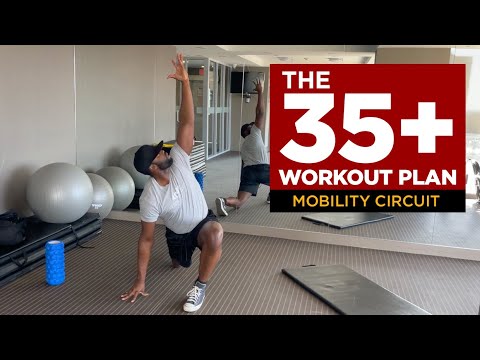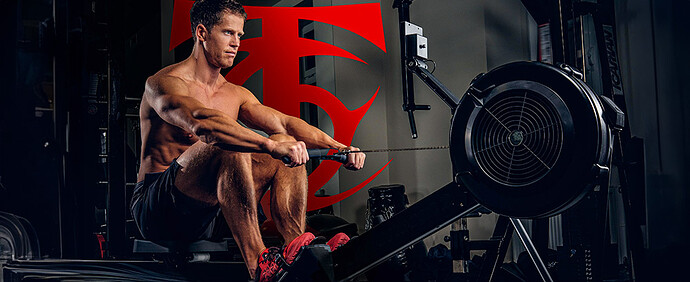01dragonslayer
Registered
- Joined
- Jun 18, 2022
- Messages
- 5,897
- Reaction score
- 3
- Points
- 38
Real Advice for Normal People
Follow these rules and you’ll look good, feel good, and live a long time without pain. Warning: Reality checks incoming!
If you’ve got a 9-to-5 job, responsibilities, and your income doesn’t depend on your abs, it’s time for a reality check: you might be setting the bar too high and sabotaging your consistency, health, and results.
For 16 years, most of my clients have been regular people. And the vast majority of them only want two things: to look good and to feel good. Really, that’s it.
Most don’t care how much they can lift, what type of cardio they do, or whether they train 3 or 7 days per week, as long as the end result is being relatively strong and healthy with an aesthetically pleasing physique. The main goals should be to perform consistently and do it pain-free. Most people can only achieve one of these things at any given time.
The problem? Biting off much more than you can chew and taking on a program that’s either too advanced or too time-demanding. Programs like this are great if you’re young with a part-time job, no family, no mortgage, and a setback-free training history.
If you’re over 35 4, chances are, this doesn’t apply to you. Other priorities take precedence over your 2RM bench press. Now it’s all about fitness, health, and longevity. It’s time to dial things back for a sustainable and injury-free journey.
Here are the five rules that’ll get you there.
Rule 1: Train Mobility and Flexibility Daily
Having access to a full range of motion is a good thing. And you’ll train your way toward that by doing some dedicated mobility work. Even the right stretches go a long way in preserving mobility.I’m tired of the narrow-minded fear of losing 0.005 percent of your precious gains because you spend a few minutes getting your joints and muscle tissues limber before a workout. If you’re not focusing on increasing and maintaining flexibility as you age, you’re setting yourself up for pain.
Do it on your off days too. It doesn’t have to eat away all your time. Taking 5 to 10 minutes can make the difference between feeling healthy and performing well and existing in a world of chronic pain and achiness. Do this routine before a workout and on off days. It’s six minutes well spent.

The 35+ Workout Plan – Mobility Circuit
Rule 2: Lift Every Other Day
If you want to be consistent, don’t lift too many days in a row. So, if you didn’t train yesterday, train today. If you trained today, don’t train tomorrow. Lifting every other day gives you an average of 3.5 workouts per week, every week, using a system that’s incredibly easy to track.In many cases, a lifter might start an overzealous 5 or 6-day-per-week program and then tweak something or get overwhelmed with life outside the gym. This leads to inconsistency and guilt that ironically causes more missed workouts.
Find a program that supports consistency and crush it when it’s time to train, like this one 22. Don’t negotiate with that every-other-day schedule. Consider adding another day once you’ve successfully owned that for a solid six months.
Rule 3: Do Cardio Every Third Workout
Don’t forget about other aspects of your health, like cardiorespiratory capacity. Strength is paramount as we age, but so is muscular endurance, cardio, and body composition. Being strong spills over into these, but those results are more indirect than we think. If our cardiorespiratory capacity was trained enough through lifting, then any strong lifter should be able to crack out an easy two-mile run. We know this isn’t the reality.So, it’s time to get your cardio going. It doesn’t have to be anything crazy. Just don’t go three lifting workouts without adding some steady-state cardio (or even interval work) into the mix.
Do steady state at around 60% of your top-end since it taps into an energy system your body won’t be as used to compared to lifting weights. The choice of equipment and modality is up to you: an incline walk on the treadmill, a rowing machine 3 session, bike or elliptical, a Stairmaster, or even a combination. Aim for a half hour to start. Make it a thing.

Cardio-Workout1000×409 115 KB
Rule 4: Focus on What Feels Good, Practice What You Suck At
Learn to train intuitively. I’ve been hammering away at that for the last decade. It’s an invaluable nugget of wisdom.You’re not tied to your pre-planned heavy bench day if your shoulder hurts. You’re not a competitor. Not pivoting to something else would be stupid, even if you were. There’s nothing on the line other than your health – no money, no additional opportunities, and no longevity.
So, the prime focus should be to train patterns that agree with your body. If the back squat doesn’t work for your spine but a safety squat to a box does, take advantage of that. This isn’t an excuse to neglect fundamental movement patterns 2, but to seek individuality and variation under each pattern’s umbrella.
On the flip side, you’ll get plenty of fitness benefits by practicing patterns you’re not good at yet. This isn’t the same as selecting exercises that harm your joints and don’t feel good.
There’s a difference between sucking at an exercise because you suck at it, and sucking at an exercise because you’re force-feeding it and it’s causing more harm than good. If you’ve been neglecting unilateral exercise, callisthenic work, or maybe instability training, round out your fitness and put them into practice. Why? For the end goal of staying healthy and uninjured for a long time.
Rule 5: Understand Your Body and Body Type
As a 6’4" lifter with a 6’8" wingspan, I’ve had my share of fitting a square peg into a round hole regarding exercises, variations, grips, foot widths, and setups. Understanding the difference between a movement that really suits a certain body type and one that doesn’t is half the battle.A back-squat-heavy program is a lot friendlier to a lifter with a longer torso and shorter femurs compared to a lifter with the opposite dimensions. A lifter with small hands will almost always be limited by his grip strength before his back strength when doing a pull workout.
My book, Strength Training for All Body Types: The Science of Lifting and Levers 13, goes into detail about finding the right exercise variations for virtually any body type (for every major movement pattern), broken down by anthropometry and leverages. It was a real passion project for me and my coauthor Melody Schoenfeld (who’s 5 feet tall). It’s a smart guide to exercise selection and programming as a whole.
